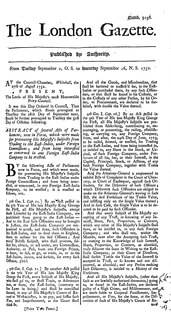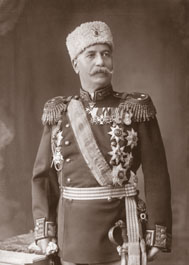
The Second Balkan War was a conflict which broke out when Bulgaria, dissatisfied with its share of the spoils of the First Balkan War, attacked its former allies, Serbia and Greece, on 16 (O.S.) / 29 (N.S.) June 1913. Serbian and Greek armies repulsed the Bulgarian offensive and counter-attacked, entering Bulgaria. With Bulgaria also having previously engaged in territorial disputes with Romania, this war provoked Romanian intervention against Bulgaria. The Ottoman Empire also took advantage of the situation to regain some lost territories from the previous war. When Romanian troops approached the capital Sofia, Bulgaria asked for an armistice, resulting in the Treaty of Bucharest, in which Bulgaria had to cede portions of its First Balkan War gains to Serbia, Greece and Romania. In the Treaty of Constantinople, it lost Edirne to the Ottomans.
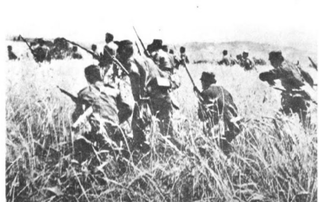
The Battle of Kilkis–Lachanas took place during the Second Balkan War between Greece and Bulgaria for the town of Kilkis in Macedonia. The battle lasted three days from 19 to 21 June 1913 and ended with a Greek victory.

The Battle of Turtucaia in Bulgaria, was the opening battle of the first Central Powers offensive during the Romanian Campaign of World War I. The battle lasted for five days and ended with the capture of the fortress of Tutrakan and the surrender of its Romanian defenders.
The Second Army of the Ottoman Empire was one of the field armies of the Ottoman Army. It was formed in the late 19th century during Ottoman military reforms.

The Bulgarian Land Forces are the ground warfare branch of the Bulgarian Armed Forces. The Land Forces were established in 1878, when they were composed of anti-Ottoman militia (opalchentsi) and were the only branch of the Bulgarian military. The Land Forces are administered by the Ministry of Defence, previously known as the Ministry of War during the Kingdom of Bulgaria.

The 1st Infantry Division "Smyrni" is an historic and elite division of the Hellenic Army. It was founded in 1897 as an infantry division and has fought in all major conflicts in which Greece has been involved. During the Balkan Wars, it acquired the sobriquet "Iron Division".
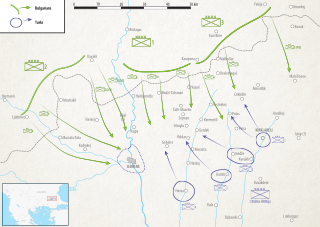
The Battle of Kircaali or Battle of Kardzhali was part of the First Balkan War between the armies of Bulgaria and the Ottoman Empire. It took place on 21 October 1912, when the Bulgarian Haskovo Detachment defeated the Ottoman Kırcaali Detachment of Yaver Pasha and permanently joined Kardzhali and the Eastern Rhodopes to Bulgaria. The anniversary of that event is celebrated annually on 21 October as a holiday of the city.
The Bulgarian Second Army was a Bulgarian field army during the Balkan Wars, World War I, and World War II.
The Bulgarian Third Army was a Bulgarian field army during the Balkan Wars, World War I, and World War II.
The following is the Bulgarian Order of Battle at the beginning of the First Balkan War as of October 8, 1912. After its mobilization the field army counted for 366,209 men and represented half the field forces of the Balkan League. Its greater part was deployed in the main theater of the war in Thrace but the army also contributed to the allied war effort in Macedonia. This order of battle includes all combat units, including engineer and artillery units, but not medical, supply, signal and border guard units.
The First Army or First Guards Army of the Ottoman Empire was one of the field armies of the Ottoman Army. It was formed in the middle 19th century during Ottoman military reforms.
The I Corps of the Ottoman Empire was one of the corps of the Ottoman Army. It was formed in the early 20th century during Ottoman military reforms.
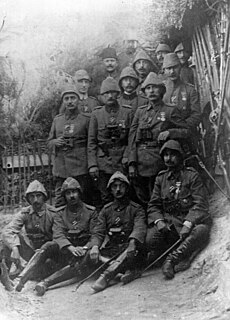
The III Corps of the Ottoman Empire was one of the corps of the Ottoman Army. It was formed in the early 20th century during Ottoman military reforms.
The IV Corps of the Ottoman Empire was one of the corps of the Ottoman Army. It was formed in the early 20th century during Ottoman military reforms. It was disbanded at the end of World War I.
The VII Corps of the Ottoman Empire was one of the corps of the Ottoman Army. It was formed in the early 20th century during Ottoman military reforms.
The X Corps of the Ottoman Empire was one of the corps of the Ottoman Army. It was formed in the early 20th century during Ottoman military reforms.
The following is the order of battle of the Hellenic Army during the First Balkan War.

The mobilization of the Bulgarian Army on the eve of the Kingdom of Bulgaria's entry into World War I took place between 11 and 30 September 1915. It was a direct consequence of the military convention between the German Empire, Austria-Hungary and Bulgaria and the Treaty of Friendship and Alliance between Bulgaria and Germany that were signed on 6 September, marking the official alignment of the country with the Central Powers.
The following is the Bulgarian Order of Battle at the start of the Second Balkan War as of 29 June [O.S. 16 June] 1913. This order of battle includes all combat units, including engineer and artillery units, but not medical, supply, signal, border guard and garrison units.
The 3rd Infantry Division was an infantry division of the Hellenic Army.




